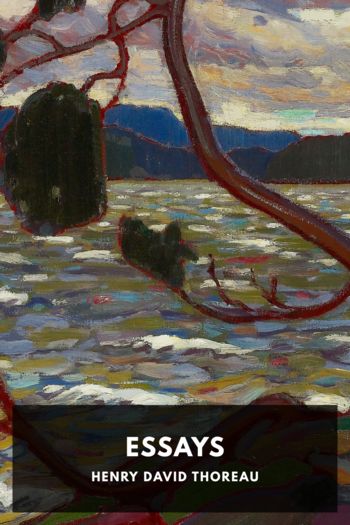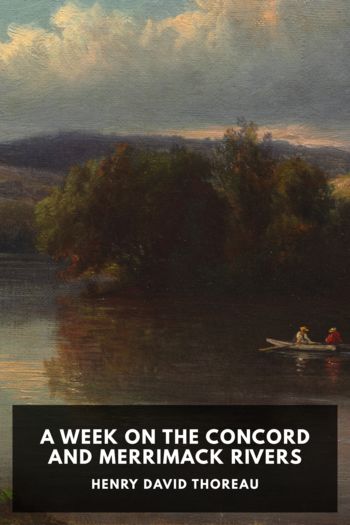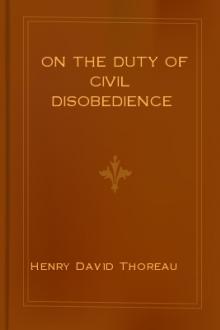Essays by Henry David Thoreau (feel good books .txt) 📕

Description
Though perhaps most famous for Walden, Henry David Thoreau was also a prolific essayist. Many of his essays touch on subjects similar to his famous book: long walks through nature, things found in moonlight that are invisible and unheard during the day, his preference for wild apples over domestic ones. In many ways he prefigured environmentalism, expressing his love for untouched nature and lamenting what the encroachment of man and cities were doing to it.
He also had strong opinions on many other subjects. One of his most famous essays, “On the Duty of Civil Disobedience,” was written as a result of his going to jail for refusing to pay several years’ worth of poll taxes. One of the primary reasons for his refusal was his holding the government in contempt for its support of slavery, and several of his other essays express support and admiration for John Brown, who thought to start a slave revolt when he attacked Harper’s Ferry in 1859.
Whether discussing trees in a forest, slavery, or the works of Thomas Carlyle, Thoreau’s essays are deeply personal and full of keen observations, often in poetic language. They give a sense of the man expressing them as being much more than the views being expressed.
Read free book «Essays by Henry David Thoreau (feel good books .txt) 📕» - read online or download for free at americanlibrarybooks.com
- Author: Henry David Thoreau
Read book online «Essays by Henry David Thoreau (feel good books .txt) 📕». Author - Henry David Thoreau
At a shoe-shop, whither we were directed for this purpose, we got some of our American money changed into English. I found that American hard money would have answered as well, excepting cents, which fell very fast before their pennies, it taking two of the former to make one of the latter, and often the penny, which had cost us two cents, did us the service of one cent only. Moreover, our robust cents were compelled to meet on even terms a crew of vile halfpenny tokens, and bung-town coppers, which had more brass in their composition, and so perchance made their way in the world. Wishing to get into the citadel, we were directed to the Jesuits’ Barracks—a good part of the public buildings here are barracks—to get a pass of the Town Major. We did not heed the sentries at the gate, nor did they us, and what under the sun they were placed there for, unless to hinder a free circulation of the air, was not apparent. There we saw soldiers eating their breakfasts in their messroom, from bare wooden tables in camp fashion. We were continually meeting with soldiers in the streets, carrying funny little tin pails of all shapes, even semicircular, as if made to pack conveniently. I supposed that they contained their dinners—so many slices of bread and butter to each, perchance. Sometimes they were carrying some kind of military chest on a sort of bier or handbarrow, with a springy, undulating, military step, all passengers giving way to them, even the charette-drivers stopping for them to pass—as if the battle were being lost from an inadequate supply of powder. There was a regiment of Highlanders, and, as I understood, of Royal Irish, in the city; and by this time there was a regiment of Yankees also. I had already observed, looking up even from the water, the head and shoulders of some General Poniatowsky, with an enormous cocked hat and gun, peering over the roof of a house, away up where the chimney caps commonly are with us, as it were a caricature of war and military awfulness; but I had not gone far up St. Louis Street before my riddle was solved, by the apparition of a real live Highlander under a cocked hat, and with his knees out, standing and marching sentinel on the ramparts, between St. Louis and St. John’s Gate. (It must be a holy war that is waged there.) We stood close by without fear and looked at him. His legs were somewhat tanned, and the hair had begun to grow on them, as some of our wise men predict that it will in such cases, but I did not think they were remarkable in any respect. Notwithstanding all his warlike gear, when I inquired of him the way to the Plains of Abraham, he could not answer me without betraying some bashfulness through his broad Scotch. Soon after, we passed another of these creatures standing sentry at the St. Louis Gate, who let us go by without shooting us, or even demanding the countersign. We then began to go through the gate, which was so thick and tunnel-like, as to remind me of those lines in Claudian’s “Old Man of Verona,” about the getting out of the gate being the greater part of a journey—as you might imagine yourself crawling through an architectural vignette at the end of a black-letter volume. We were then reminded that we had been in a fortress, from which we emerged by numerous zigzags in a ditch-like road, going a considerable distance to advance a few rods, where they could have shot us two or three times over, if their minds had been disposed as their guns were. The greatest, or rather the most prominent, part of this city was constructed with the design to offer the deadest resistance to leaden and iron missiles that might be cast against it. But it is a remarkable meteorological and psychological fact, that it is rarely known to rain lead with much violence, except on places so constructed. Keeping on about a mile we came to the Plains of Abraham—for having got through with the Saints, we come next to the Patriarchs. Here the Highland regiment was being reviewed, while the band stood on one side and played—methinks it was “La Claire Fontaine,” the national air of the Canadian French. This is the site where a real





Comments (0)